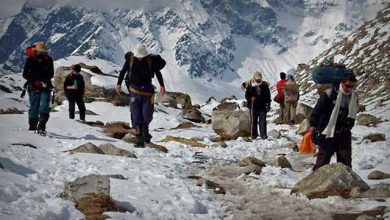Ha Giang Loop Itinerary: What You Need to Know Before You Go

Tucked into Vietnam’s remote northern mountains, the Ha Giang Loop is a dream for those craving adventure, authenticity, and jaw-dropping scenery. Unlike the more touristy trails in Halong Bay or Sapa, Ha Giang offers rugged limestone karsts, winding passes, and an invitation to experience local culture up close.
Whether you’re riding solo or booking through a Vietnam travel agency, this route is quickly becoming a top choice for those who want a more immersive Vietnam country tour.
The real beauty of the loop is its unpredictability—one minute you’re hugging the edge of a misty mountain, and the next you’re sipping tea in a quiet ethnic minority village. It’s not just a journey through space; it’s a deep dive into a slower, more meaningful way of travel.
How Many Days Do You Need for the Ha Giang Loop?
Most travelers tackle the Ha Giang Loop in 3 to 5 days, depending on their pace and how much they want to explore. Each option offers something unique:
3-Day Itinerary
If you’re on a tight schedule, a 3-day loop lets you hit the highlights. On Day 1, head from Ha Giang City through Quan Ba to Yen Minh. The landscapes are lush and hilly, offering a nice warm-up.
Day 2 takes you through Dong Van and over the famous Ma Pi Leng Pass—arguably Vietnam’s most scenic stretch of road. Day 3 brings you back through Du Gia or Bao Lam, depending on your route and road conditions.
4-Day Itinerary
This is the sweet spot for many travelers. It allows enough time to enjoy the villages and scenery without rushing. On Day 1, travel from Ha Giang to Yen Minh. Day 2, make your way to Dong Van, stopping for short hikes and photo breaks.
Day 3 is about soaking in Ma Pi Leng and then descending into the peaceful valley of Du Gia. Day 4 wraps things up with a scenic return to Ha Giang.
5+ Days Itinerary
For those who like to travel slow and absorb more, 5 days or more opens up options. You could hike in Lung Cu (Vietnam’s northernmost point), spend an extra night in Du Gia, or even branch off the loop for a detour to remote villages where tourism hasn’t yet made its mark.
Ha Giang Loop Map and Route Overview
The loop forms a circle that starts and ends in Ha Giang City. Most riders follow this sequence: Ha Giang → Quan Ba → Yen Minh → Dong Van → Ma Pi Leng Pass → Meo Vac → Du Gia → Ha Giang. The route includes dramatic mountain passes, dense pine forests, and views that stretch all the way into China.
Download an offline map (like Maps.me or Google Maps in offline mode), and always ask locals for updates. In the rainy season, some areas might be impassable due to landslides.
How to Travel the Loop: Solo, Guided Tour, or Easy Rider?
You’ve got a few ways to experience the loop, and the best choice really depends on your comfort level.
- Solo Riding is for experienced motorcyclists who feel confident navigating mountain roads. It’s the most flexible option, but it does carry some risks—especially with unpredictable weather or road conditions.
- Guided Tours are perfect for those who prefer structure and safety. A reliable Vietnam travel agency will arrange everything from accommodation to meals, leaving you free to enjoy the ride.
- Easy Rider Tours let you sit back and enjoy the view while a local driver handles the motorbike. This is a great middle-ground option for travelers who want the thrill of the ride without the stress of driving.
What to Pack for the Ha Giang Loop
Pack light but smart. Mountain weather can shift quickly—sunny mornings can turn into chilly evenings. Bring:
- Layered clothing
- Rain jacket (essential during rainy season)
- Gloves and sunglasses
- First-aid kit
- Travel insurance info
- Offline maps and power bank
Also, bring enough cash for the full loop, as ATMs are rare after you leave Ha Giang City.
Safety Tips and Road Conditions
Safety is key on the loop. The roads can be narrow, winding, and often shared with livestock or local trucks. Drive slowly, especially near mountain passes or in foggy conditions. Avoid riding after dark—there’s little to no street lighting.
Dry season (October to April) is the safest time to ride, while the wet season (May to September) brings lush views but slick roads. If you’re a beginner, going with a guide or Easy Rider is strongly recommended.
Where to Stay on the Ha Giang Loop
Homestays are the heart of the Ha Giang experience. In Yen Minh, Bong Bang Homestay offers cozy beds and hearty meals. Dong Van has options like Green Karst Hostel and Plum Homestay, both known for friendly hosts and great mountain views.
In Meo Vac, Auberge de Meo Vac is a favorite among comfort travelers. And in Du Gia, Du Gia Backpacker Homestay offers hammocks, hot meals, and chill vibes.
Staying in homestays not only supports local families but also provides a richer cultural exchange—you’ll often share dinner with the hosts and learn more about ethnic minority traditions.
What to Eat Along the Way
Food on the loop is hearty and often locally sourced. Try regional specialties like thang co, a traditional soup with roots in Hmong culture. It’s not for everyone, but it’s a memorable experience. You’ll also find grilled meats, sticky rice, and noodle soups.
Vegetarians, don’t worry—just say “ăn chay” (ahn-chai) and most places will accommodate you with stir-fried veggies, tofu, or egg dishes.
Best Time to Do the Ha Giang Loop
The dry season (October to April) is ideal. Roads are safer, skies are clearer, and temperatures are comfortable. If you go in October, you’ll also catch the Buckwheat Flower Festival, when the hills turn shades of pink and purple—a beautiful bonus.
During the green season (May to September), the landscape becomes lush and vibrant. You might get rained on, but you’ll also see the region at its most photogenic.
Final Tips Before You Go
- Cash is king. Most homestays and eateries don’t accept cards.
- Connectivity is limited. Download translation apps and offline tools before leaving.
- Travel insurance is a must. Make sure it covers motorbike accidents.
- Be respectful. Dress modestly, smile often, and always ask before taking photos.
Some Vietnam travel agencies include the Ha Giang Loop as part of their Vietnam and Cambodia tours. It’s a fantastic addition for travelers looking for something raw, remote, and real.
Ready to Ride the Ha Giang Loop?
Few journeys in Southeast Asia compare to the Ha Giang Loop. It’s raw, rewarding, and reveals a side of Vietnam that most travelers never see. Whether you’re traveling independently or booking through a Vietnam travel agency as part of a broader Vietnam and Cambodia tour, Ha Giang delivers the kind of experience you’ll be talking about for years.




